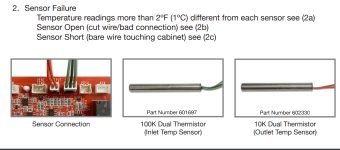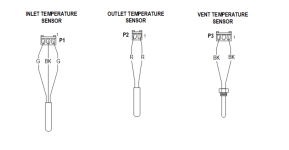Hi All - I haven’t updated my signature with pool size, equipment, and all other necessary things but I will eventually.
Anyhow, we’re having an issue with our heater, it’s a new Raypak Avia 404, that shuts off after roughly 10 min. The digital screen says two things:
Flue Extremely Low
and
High Flow Fault
I called Raypak yesterday and the tech that I spoke with said that those are indicators that the water flow through the heater is too high/fast for it to heat it properly.
He asked what pump size we have, told him it’s a 1.5 HP for an 18x36 pool.
He said to:
1. Install an external bypass with a ball valve to slow down the flow.
Or
2. Switch to a variable speed pump to slow down the flow.
I haven’t done either yet, but in the back of my mind I keep thinking that this is a large heater, why couldn’t it handle the flow from a 1.5 hp pump or even a larger pump.
Anyhow, we’re having an issue with our heater, it’s a new Raypak Avia 404, that shuts off after roughly 10 min. The digital screen says two things:
Flue Extremely Low
and
High Flow Fault
I called Raypak yesterday and the tech that I spoke with said that those are indicators that the water flow through the heater is too high/fast for it to heat it properly.
He asked what pump size we have, told him it’s a 1.5 HP for an 18x36 pool.
He said to:
1. Install an external bypass with a ball valve to slow down the flow.
Or
2. Switch to a variable speed pump to slow down the flow.
I haven’t done either yet, but in the back of my mind I keep thinking that this is a large heater, why couldn’t it handle the flow from a 1.5 hp pump or even a larger pump.



















